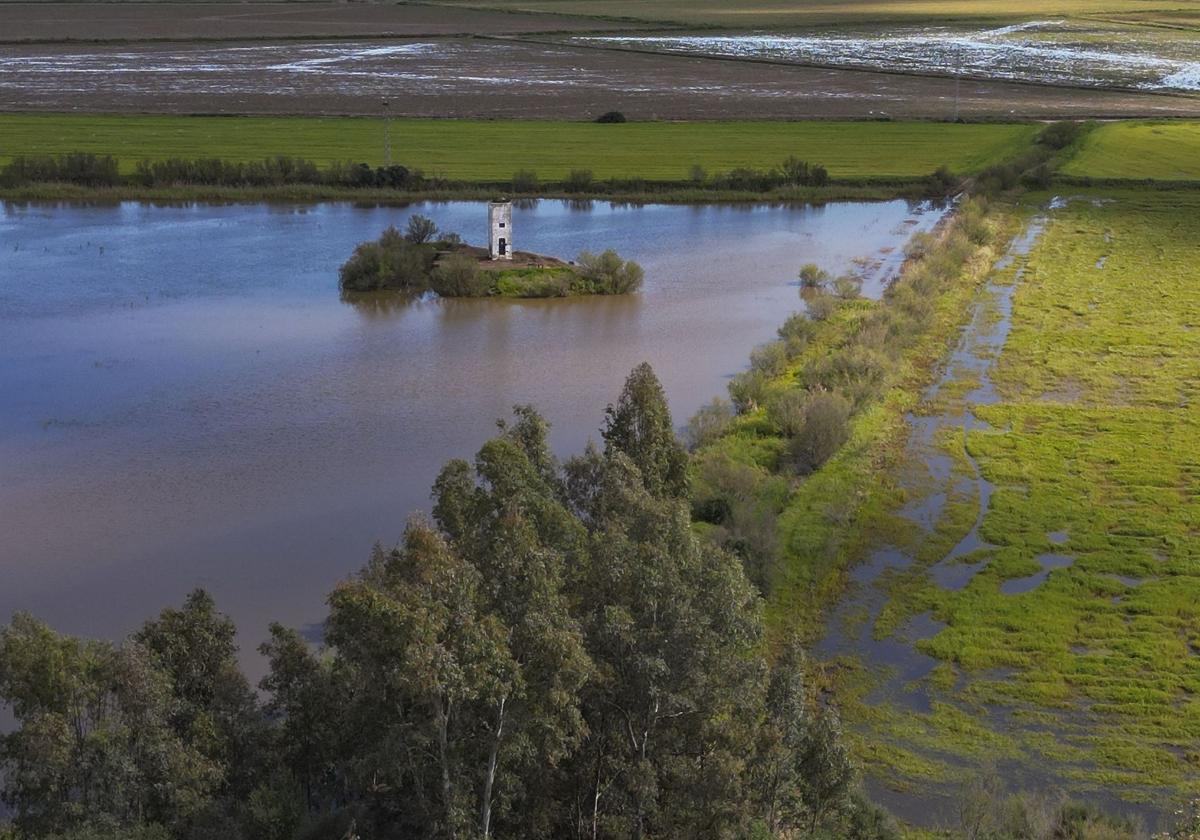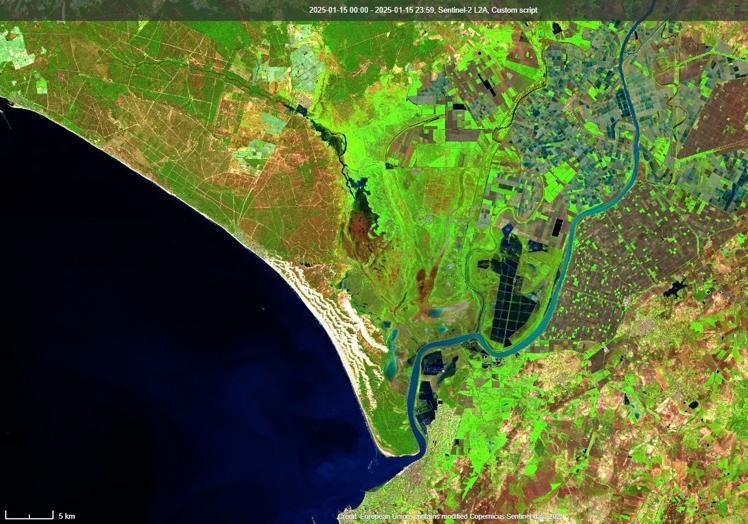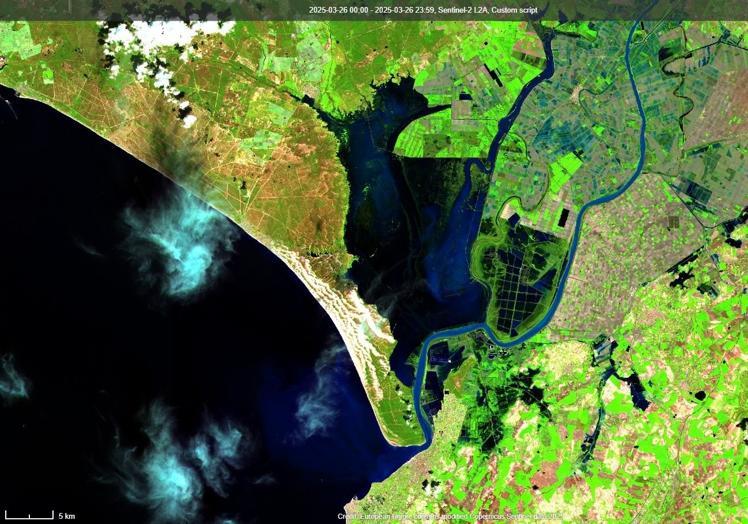

Sections
Highlight

The latest heavy rains in March have worked a miracle in Spain's Doñana National Park, which has been brought back to life with flooded marshes, radically changing the appearance of this world heritage wetland. The recent rainfall has brought relief to the area's aquifer, although it is only a temporary respite because the lack of water persists in this iconic natural park.
The recent rainfall has nevertheless been very positive. Some meteorological stations have recorded over 700 litres per square metre of rainfall, making March one of the wettest since records began, with some locations recording close to 300 litres per square metre within the month.
At present, the marshlands in the area corresponding to what is Doñana National Park, which covers some 30,000 hectares, are in an exceptionally good state with at least 28,000 hectares flooded. In the area designated as a natural park, whose marshland covers some 20,000 hectares, some 11,000 hectares remain flooded, a figure that could be even higher if the partially flooded agricultural areas, which have not been included in this initial calculation, were taken into account. We would have to go back to 2010 to see a similar situation for this location.


The river authority for the Guadalquivir area has recorded a significant average rise of 55 centimetres in the water levels of Doñana's aquifer during the month of March. According to data from the hydrological information-gathering system, which has 200 automated control points in this part of the river basin, the aquifer's behaviour is fairly homogeneous, with a maximum rise of 114 centimetres and a minimum of 14 centimetres, with the northern area recording the greatest rise.
Regional minister for the environment, Catalina García, expressed her satisfaction with the positive impact that these rains are having on Doñana, favouring its biodiversity and improving its hydrological balance.
She pointed out that "very positive levels of rainfall have been registered, record-breaking figures that have allowed the reactivation of the system of streams and rivers that feed the marshes thanks to a generalised flooding." In her opinion, "this improvement in the situation anticipates a favourable spring for the reproduction of many species, especially waterfowl, and for the general strengthening of the vegetation." García also stated that "although the refilling of the aquifer is slower, a significant improvement is expected compared to the records of the last decade, which will redress the water balance for the park."
"We have reasons for optimism, but we also have the obligation to continue working to make Doñana resilient to the climatic cycles that await us," she stressed.
39,000 hectares
of marshlands have been flooded by the heavy rains in March.
700 mm
of rainfall has been collected in some parts of the park.
For its part, the Estación Biológica de Doñana (EBD), a scientific research institute that looks into the biodiversity of this site, also valued the important contribution of water that these rains have provided, while awaiting precise data on the water collected in the next few days. It also predicted the great benefit it will have for the ecosystems and for the reproduction of the aquatic bird species that are now beginning their breeding period in the park's marshes, as well as for amphibians.
Deputy EBD director Javier Bustamante pointed out that "the month of March was the wettest since records began and has placed us above the historical average in terms of rainfall, when in recent years we have always been below it."
Bustamente stressed that the rains have left the park in a very good position by refilling the aquifer, although he admitted that "this does not solve the problem of overexploitation that it has suffered for 40 years, as its recovery requires a long period of rainfall." He stated quite categorically that "the underlying problem continues and these rains are not the solution."
The World Wildlife Fund (WWF) representative in Doñana, Juanjo Carmona, highlighted that "these rains invite hope and now we have a very beautiful and exciting picture, so we hope to have a good waterfowl breeding season after very bad seasons."
However, the environmentalist was cautious and pointed out that "we have to wait and see how the spring ends in terms of rainfall because, once summer comes and the lagoons dry up again, we will be in the same situation."
According to Carmona, "we have to wait to see how the aquifer has recovered when the hydrological year ends because Doñana is not a one-day snapshot, it is a film that has to be watched until the end of the season because the problem with the aquifer is that we take out more water than enters some of its points."
The WWF representative argued that "the cycles in Doñana are important and must be taken into account and not just a one-off episode" and he also made it clear that "the structural water problems suffered by the park are not fixed just because it rained in March, especially after a dry winter."
Publicidad
Publicidad
Publicidad
Publicidad
Esta funcionalidad es exclusiva para registrados.
Reporta un error en esta noticia

Debido a un error no hemos podido dar de alta tu suscripción.
Por favor, ponte en contacto con Atención al Cliente.

¡Bienvenido a SURINENGLISH!

Tu suscripción con Google se ha realizado correctamente, pero ya tenías otra suscripción activa en SURINENGLISH.
Déjanos tus datos y nos pondremos en contacto contigo para analizar tu caso

¡Tu suscripción con Google se ha realizado correctamente!
La compra se ha asociado al siguiente email
Comentar es una ventaja exclusiva para registrados
¿Ya eres registrado?
Inicia sesiónNecesitas ser suscriptor para poder votar.